Trade between Vietnam and Germany – Advantages and Disadvantages for Business
Success storiesBusiness opportunities and risks for companies trading in Vietnam
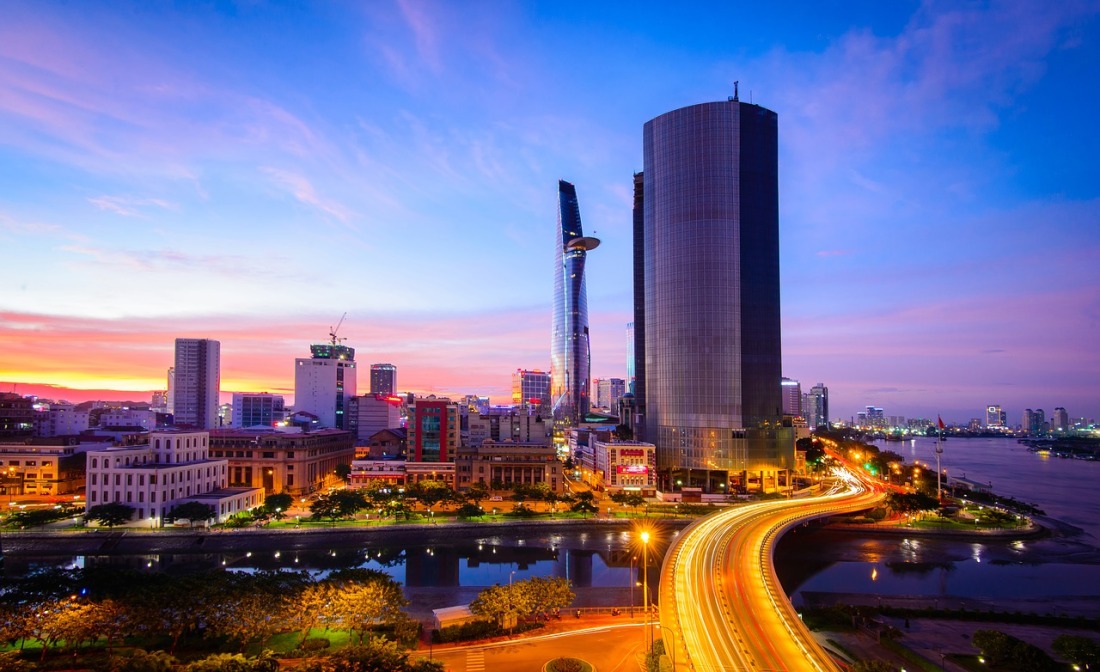
What are the advantages and disadvantages of trading with Vietnam? – What opportunities and risks affect trade and business with the South-East Asian country? This article provides an overview of the economic development and trading relationships between Germany and Vietnam.
Contents
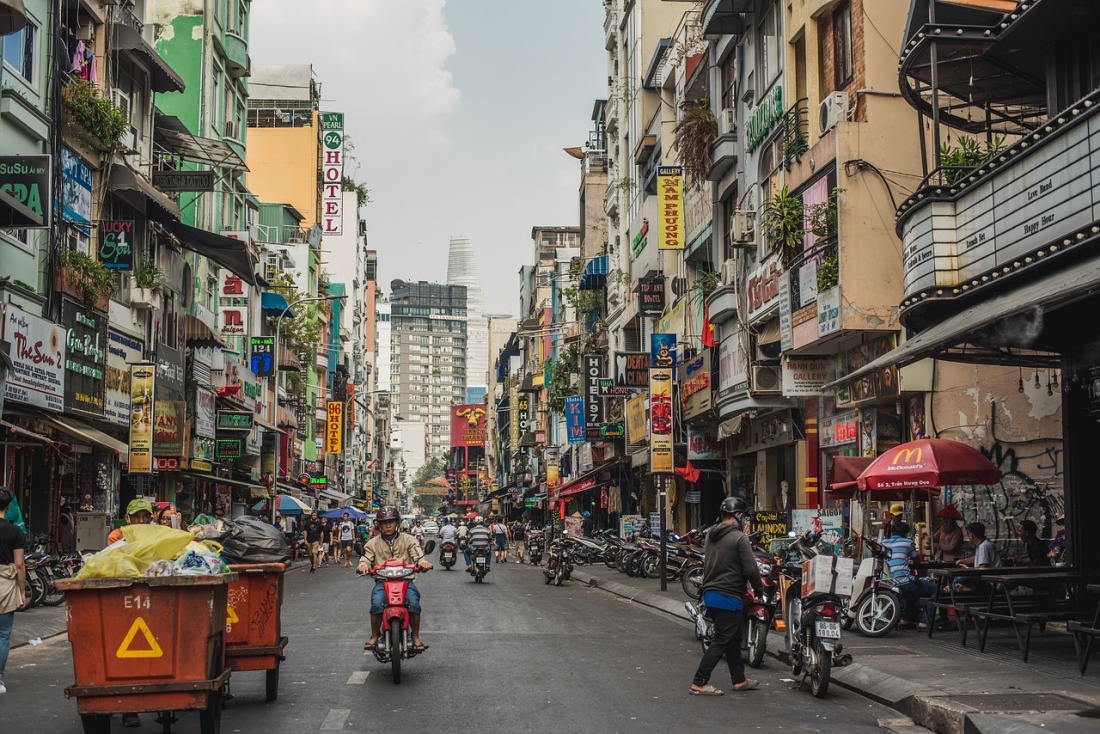
Economic Development in Vietnam
Vietnam is one of the world's fastest growing national economies. With the exception of 2020, the year of the pandemic, its annual economic growth is around seven percent: one of the highest growth rates world-wide. Vietnam's estimated population of 100 million inhabitants generate a gross domestic product of approximately 330 billion US dollars a year. This places the country at number 44 among the world's largest national economies.
Despite the fact that Vietnam is, in principle, a socialist state, it has increasingly opened up to capitalism, private investments and the global economy over recent decades. The "Doi Moi" reforms of 1986 were the decisive factor in moving towards a socialist-oriented market economy. At the same time, they laid the foundations for Vietnam's rise from one of the poorest countries in the world to an expanding developing nation.
The political scene is still dominated by the Communist Party, which affects the country's economy and its public life alike. However, after a series of reforms, Vietnamese people and investors from abroad are now allowed to operate private businesses. Although state-run companies still account for around half the total revenues generated by business, their share continues to fall. Growth in the private sector, driven particularly by investment from abroad, is significantly greater than in the state sector.
This liberalisation of the internal market continues to grow. The signing of a free trade agreement with the EU in early 2020 is one of the many examples of this trend. Another example of this is to be seen in the liberalisation of the energy sector.
However, the massive economic upturn in the country is not solely due to the on-going reforms. Thanks to numerous international agreements, which have hallmarked Vietnam's progressive policy of opening up to the outside world, the country has become attractive to investors from abroad. Vietnam also invests in public infrastructure and human capital, with the aim of both increasing its attractiveness to foreign investors and improving domestic value creation. For example, the country is currently developing a digital economy, with a myriad of start-ups.
These measures have already borne fruit: once one of the poorest nations in the world, Vietnam has now taken its place amidst middle-income countries (placed 130 of 214 in 2017). A greater part of this increasing prosperity has been achieved thanks to the export sector and the activities of foreign investors.
However, where there is light, there is also shadow: corruption is part of economic life (in the global ranking system, Vietnam is placed 117th out of 180 countries, when it comes to corruption). Networks are hugely important and Communist Party members in non-state-controlled companies continue to have a major influence on the economy. And although commercial standards have improved enormously, human rights and freedom of the press are still lagging behind.
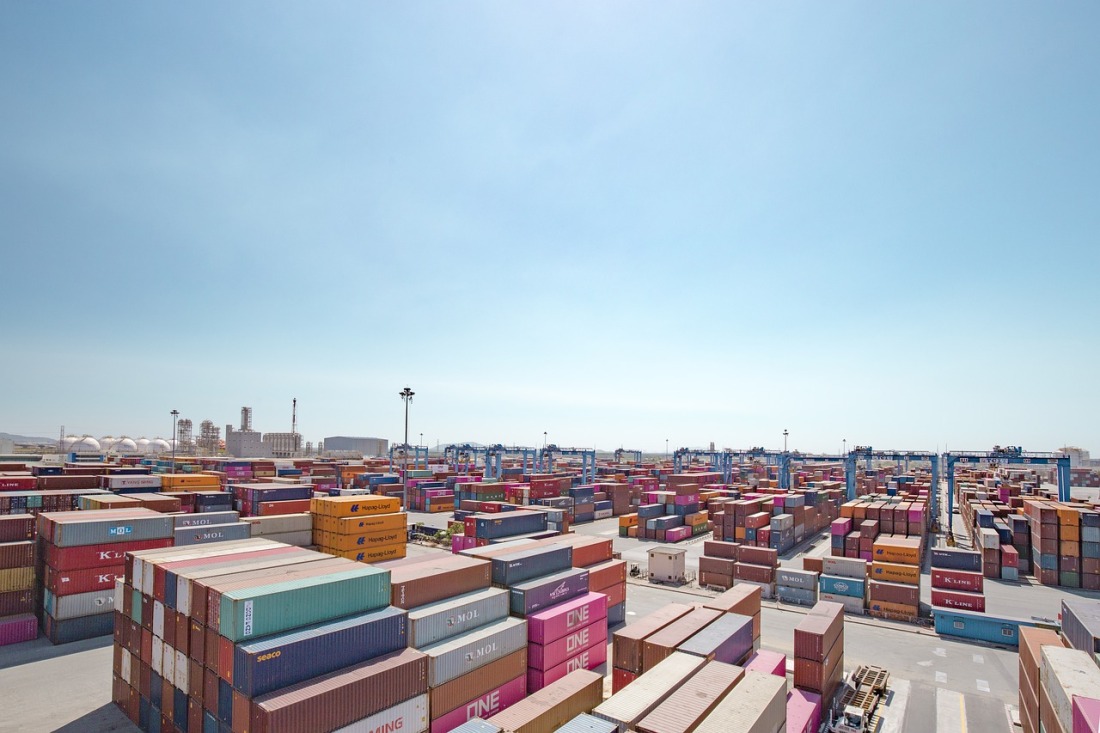
Trade in Vietnam - Imports and Exports
Like many countries in South-East Asia, especially the "Tiger States", business in Vietnam thrives on its status as a low-wage economy or the "workshop of the world" with the aim of creating prosperity through intensive industrial production. Wages in Vietnam are only half as high as those in China, which is why the focus in labour-intensive sectors such as electronics manufacturing has shifted from China to Vietnam in recent years. In actual fact, China is investing strongly in its neighbours, and not just since the USA-China trade dispute under the Trump administration, which simply accelerated this trend.
Around 35 percent of all Vietnam's imports come from China, whereas 23 percent of all its exports go to the USA. These quadrupled between 2010 and 2020. However, the proportion of actual value created by these manufactured products is relatively low. This is because many components produced abroad are sent to be assembled in Vietnam, so only a small percent of their value is created within the country itself.
An example: Samsung is one of the largest foreign investors, with total investments of around 17 billion dollars, operating six factories. In 2018, it produced goods to the value of at least 65 billion dollars. To put this another way, that represented around 28 percent of the country's total gross domestic product at that time.
This investment policy is also known as "China plus one". Companies are not withdrawing completely from the Chinese market but supplementing their production there with new operating sites in countries such as Vietnam, to position themselves more broadly and take advantage of a lower-cost production environment.
With exports totalling around 280 billion dollars (2019), which was almost as high as the country's total GDP (330 billion dollars), Vietnam was placed 20th in the global export ranking, whereas its GCP placed it down at number 44. Alongside electronic goods, Vietnam's main exports are textiles and shoes, foodstuffs, metal products and plastics.
Agriculture also continues to be an important economic sector in Vietnam, accounting for around 14 percent of the country's GDP (2019). This is comparatively high, even in comparison with neighbouring countries such as China (7 percent). This is also a feature of the change from a developing country to an emerging market. The most important agricultural products are rice, coffee and nuts.

Foreign Investments in Vietnam
Direct foreign investments (FDIs) in Vietnam have increased continuously for many years and are now at around 18 billion dollars annually (excluding the crisis year of 2020). Foreign companies benefit from the country's low wage costs and young population, its expanding market and its secure position in global free-trade agreements (EU and ASEAN). The major foreign investors are firstly Singapore and then, far behind it, South Korea, China and Japan.
Since joining the World Trade Organisation in 2007, Vietnam has seen a huge increase in FDIs which have created the foundation for its strong export-oriented production sector.
However, because the production sector creates low value, the Vietnamese Government is currently offering incentives to attract high-tech industries with higher levels of vertical integration, to increase growth and productivity alike. It is interested in sectors such as the automobile and energy industries, medicine and pharmaceuticals, finance and IT.
This robust growth has attracted many investors from the property sector: prices have risen sharply in the last few years. However, it's worth noting that it isn't possible to purchase land in Vietnam (a type of leasehold is allowed instead). In contrast, it is possible to purchase buildings, even if this is subject to a number of specific restrictions.
Trade between Germany and Vietnam
There is a trade imbalance between Germany and Vietnam. For example, goods to the value of 8 billion dollars came from Vietnam to Germany in 2019, whereas 5 billion dollars worth of goods were exported in the other direction. The most important export commodity was radio equipment, ahead of shoes. And, vice versa, Germany primarily exported aircraft and medications. Germany is Vietnam's largest trading partner within the EU.
Around 350 German companies have a presence in Vietnam, investing around 2.3 billion US dollars. Thanks to the free trade agreement with the EU, this figure could multiply in the years ahead.
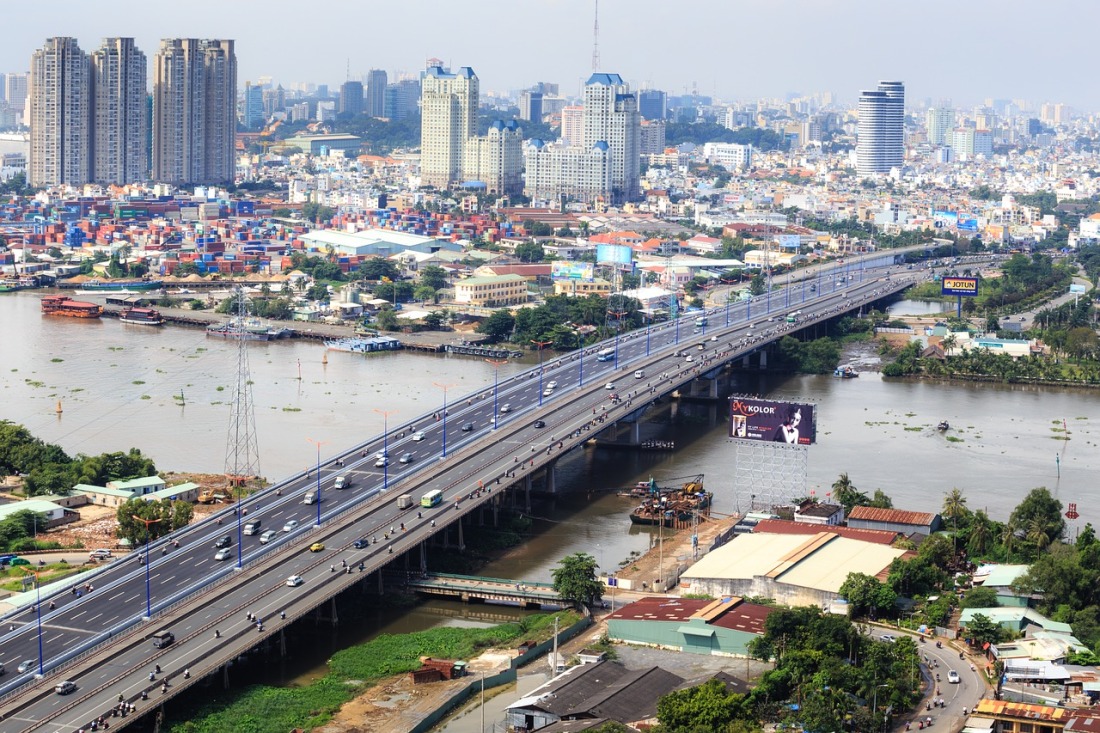
Advantages and Disadvantages of doing Business with Vietnam
Benefits and opportunities
With an anticipated growth rate of around seven percent, which is expected to continue in coming years, the Vietnamese economy is experiencing rapid growth. This also gives foreign investors new opportunities and the chance to acquire new sales markets. With its estimated 100 million inhabitants, and continued low population growth, Vietnam represents one of the largest local sales markets in South-East Asia. Although the average purchasing power of the Vietnamese people is still low and, when adjusted at purchase power parity, is still in the bottom part of the middle range, the middle class is growing quickly.
Thanks to its relatively low-wage young workforce with increasing levels of education, Vietnam can potentially provide large numbers of skilled workers, which is especially important for labour-intensive industries. Thanks to its geographical proximity to major sales markets such as China, Japan, Taiwan or South Korea, the country is also ideally placed for international trade. Added to this is a stable political situation with a government that is interested in increasing market liberalisation, growth and reforms. This, combined with its membership of free-trade agreements, makes Vietnam a favourable environment for both production and exports.
Many of Vietnam's sectors are still underdeveloped and inefficient, a situation which offers wide-ranging opportunities for foreign companies. This is especially true of the agricultural and energy sectors. The country is currently developing a rapidly expanding digital sector and has a great interest in implementing digital technologies in every aspect of life.
Vietnam offers companies from abroad a range of tax incentives, depending on sector or business location. These are designed to attract high-tech companies in particular, because the Vietnamese government has the declared objective of improving vertical integration and levels of expertise within the country itself.
Disadvantages and Risks
The advantages of setting up new businesses in Vietnam are countered by a number of challenges. In particular, many aspects of the country's public infrastructure are in need of improvement. The energy supply can't always meet the rapidly increasing demand. Although there are opportunities for foreign investors to invest in the energy sector, this isn't necessarily always straightforward.
It's not only the energy infrastructure, but also transport links and the healthcare sector in the still rather rural areas that are not up to European standards. Well-developed regions (such as the area around Ho Chi Minh City) are also where the economy is flourishing and where the infrastructure has seen the most improvements.
Vietnamese bureaucracy represents another risk. The country's complicated taxation system takes time and effort to navigate and requires the expertise of tax advisers.
The situation regarding legal certainty is also not up to Western standards. Legal disputes can drag on for a long time, be based on obscure principles and also be affected by the pervasive levels of corruption in the country. The same is true for trademark violations, infringements of copyright or patents, even if the improvements brought in by the EU free trade agreement have been implemented. The banking sector is also still underdeveloped and opaque, although this shouldn't pose a problem for foreign investors.
The expected national inflation rate is moderate for a developing country but economic upheavals as the result of crises could trigger short-term spikes.
A shortage of skilled workers could also be a risk factor, even though many young people are graduating from university and the educational level continues to rise.
Access to Vietnam: Bremen as the Gateway to Asia
As Germany's leading exporter, Bremen is especially interested in Vietnam. Around 20 companies from the Hanseatic city are currently actively involved in Vietnam and a good half dozen Vietnamese businesses are using Bremen as their launch pad for trade in Europe. The most important import commodity in 2020 was coffee (to a value of 141 million Euros), followed by shoes and seafood. Conversely, Bremen companies primarily exported vehicle components (to the value of 47 million Euros), energy generation equipment and furniture to Vietnam (source: Statistical Office of the Federal State of Bremen 2021).
Since 2016, Bremeninvest has been running its own office in Ho Chi Minh City (HCMC), the commercial centre in the south of Vietnam. The aims of this international office are to establish contacts in the local business environment, advertise Bremen and attract companies to set up in the Hanseatic city. This office also helps Bremen companies make their first contacts locally, in Vietnam, and so start their business there.
The Deutsches Haus is often the first point of contact for German companies. It's not only the location of the Consulate General and many German companies in Vietnam, but also the site of the German Business Incubator which operates an "office-in-office solution" concept, similar to that of co-working, designed to help businesses get a foothold in Vietnam.
Like many other countries, Vietnam also offers a range of options to help foreign companies establish a business there: a representative office as the official representative of a company without full legal capacity, a branch (only applicable for specific sectors), an independent company (LLC or limited company) or as a joint venture, working together with a Vietnamese company. The Vietnamese Chamber of Commerce can also provide help here.
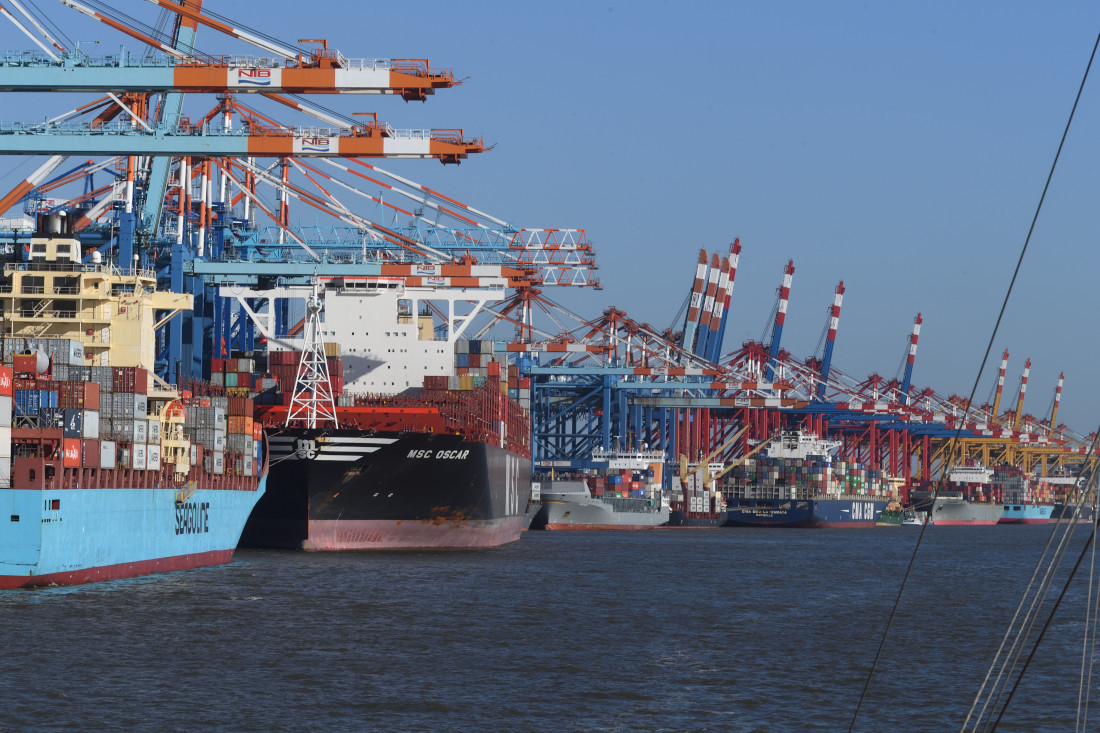
Attracting new businesses to Bremen
Medium-sized companies are the foundations of the Vietnamese economy. Only around two percent of all businesses belong to company groups. Small and medium-sized companies often find international trade a major hurdle. This is where Bremen comes into its own. Thanks to the Bremeninvest office, the Hanseatic city scores highly by having a contact person on-site who can establish initial contacts and showcase opportunities.
As one of Northern Europe's largest container ports, Bremerhaven is a regular destination for container ships from Asia and is the ideal starting point for European trading activities. Very many Bremen trading companies, such as C. Melchers or freight forwarders such as Karl Gross have their own representatives in Vietnam and can guarantee short routes for companies that are interested in trade.
Bremen also stands out from the crowd thanks to its plethora of high-tech industries, such as aerospace, renewable energy or the IT economy (especially artificial intelligence), sectors that are becoming ever more important in Vietnam. Bremen's University and Technical College are also working together with universities in Vietnam on joint student programmes. Vietnam is a target market for attracting students to Bremen.
Success Stories
Medium-Sized Companies in Bremen Showcasing the Full Range of the Local Economy
Medium-sized companies form the backbone of Bremen’s economy. They create jobs and produce goods that are in demand worldwide. Here is a selection of ten businesses that illustrate the diversity of Bremen’s economic landscape.
Learn moreMeasure, Test, Inspect – 11 Examples of Precision Engineering from Bremen
Not many people could name a manufacturer of metrology and testing equipment, but without their products we would not have space probes, aircraft or medical equipment. And Bremen is home to a whole host of these specialist companies.
Learn more8 Bremen Companies involved in Mass Spectrometry
If you want to get down to the smallest building blocks of our world, you need mass spectrometers. And there are few places in the world where there is such a high concentration of specialists and manufacturing companies and suppliers in this sector as in Bremen.
Learn more

